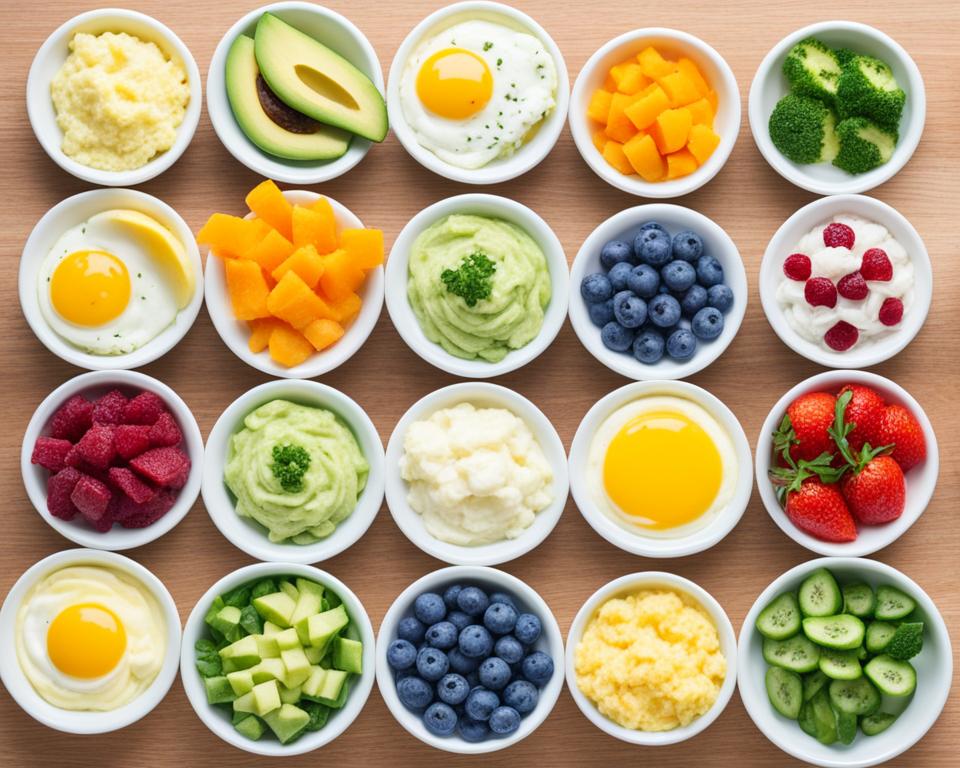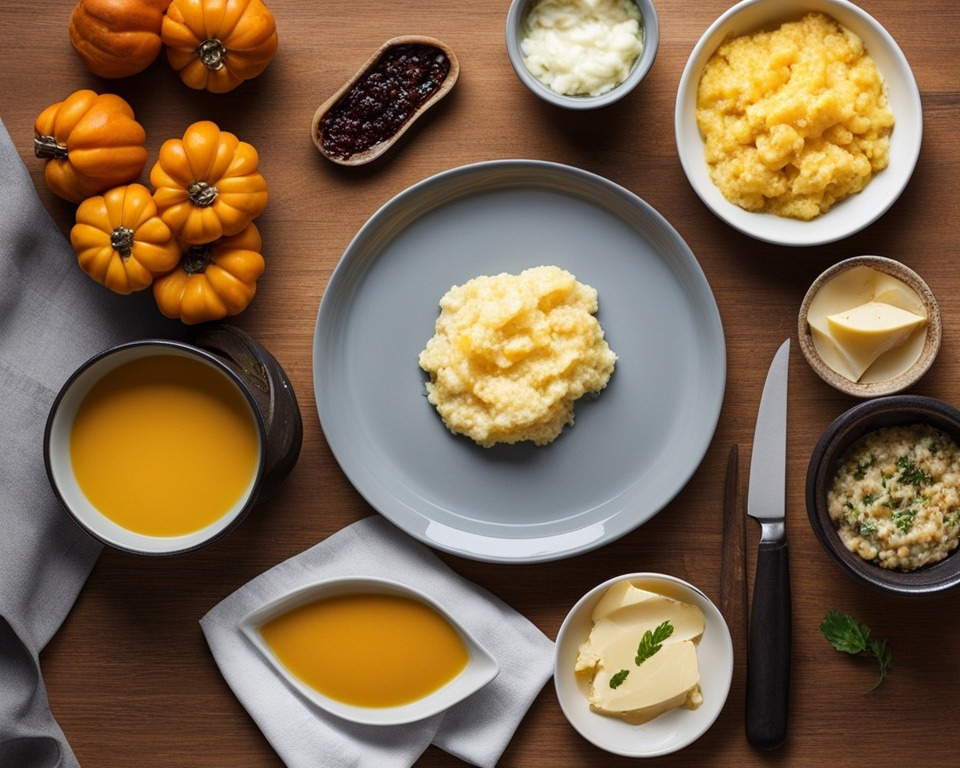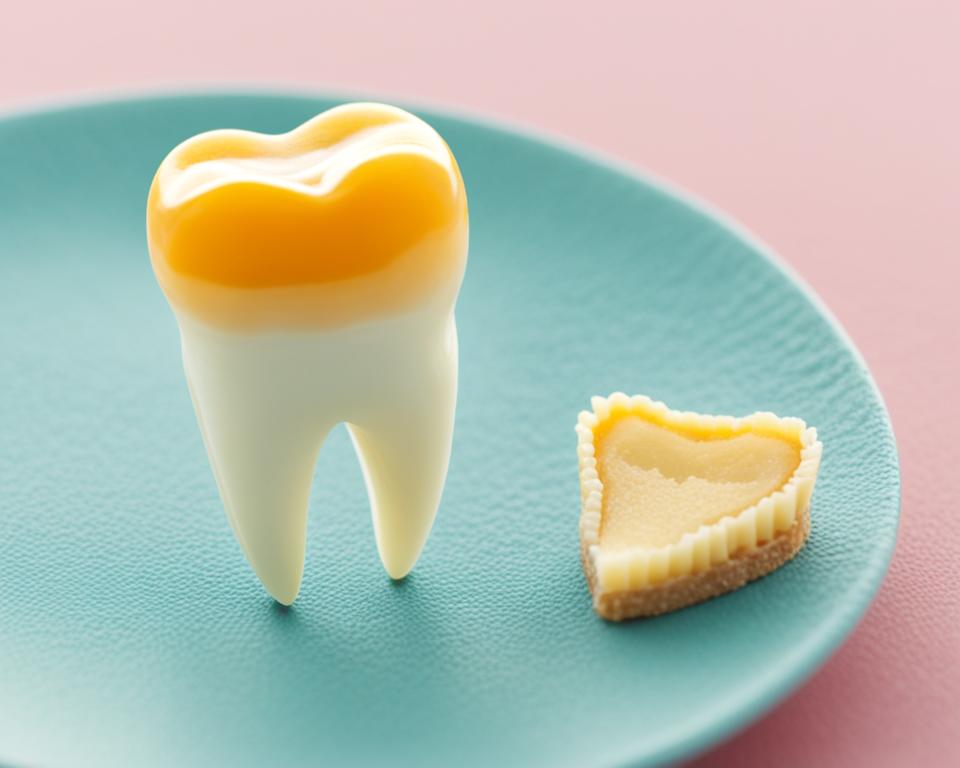Have you ever wondered why certain soft foods are specifically recommended during the recovery period after a tooth extraction? The pathway to healing following a dental procedure relies strongly on carefully chosen, easy-to-eat foods that soothe the affected area and boost the recovery process.
After a tooth extraction, your diet plays a pivotal role in ensuring a smooth and swift recovery. A thoughtfully tailored tooth extraction diet, comprising 50 soft foods, acts as a guide for patients, making the recovery experience more comfortable while promoting healing. This curated list not only includes comforting favorites but also innovative delicacies that offer both nutrition and ease of consumption.
From carefully mashed potatoes to nutrient-rich smoothies, these soft foods are chosen for their fine texture and beneficial nutritional content. This balanced selection ensures that individuals have numerous options to maintain a nutritious and varied diet, ultimately expediting the healing process. Whether you’re seeking the best soft foods after tooth removal or easy-to-eat foods for post-tooth extraction, this compilation stands as an indispensable dietary guide through every stage of recovery.
Why Soft Foods Are Essential After Tooth Extraction

Following dental surgery, a well-planned diet plays a crucial role in recovery. A carefully crafted post-tooth extraction meal plan emphasizes the necessity of gentle foods for dental recovery. Hard and crunchy foods can enhance the risk of irritation or infection, which is why nuts, seeds, chips, and crackers should be avoided post-surgery. Similarly, crunchier foods are best left out of the diet to prevent any strain on healing gums
The 50 soft and nutritious food options recommended after tooth extraction focus on ensuring a soft diet after dental surgery. Foods to embrace are those that are easy to chew, of cool or room temperature, and rich in nutrients. Consumables such as caramel, taffy, and certain dried fruits can dislodge dental work, thus should be minimized. Additionally, spicy and acidic foods are potential irritants and can prolong the healing process, meaning they should be excluded from a post-tooth extraction meal plan.
Popcorn presents additional risk, as kernels can lead to inflammation at the surgical site, underscoring the importance of making thoughtful dietary choices along with avoiding alcohol. The focus is on gentle foods for dental recovery, and therefore, dairy products like Greek yogurt and cottage cheese are highlighted for their protein content and suitability during the recovery phase. Ensuring that these foods are at a suitable temperature and easy to consume can make a significant difference in the healing process.
Ultimately, the proper selection of soft foods is essential for promoting the healing of gums and facilitating speedy recovery. This curated collection of 50 soft foods aims not only for safety but also ensures that the post-tooth extraction diet is flavorful and gratifying, making the recovery journey smoother and more comfortable.
50 Soft Foods to Eat After Tooth Extraction

| Food | How it should be served |
|---|---|
| Applesauce | Smooth, no chunks |
| Mashed potatoes | Smooth, warm, and well-mashed |
| Yogurt | Plain or flavored, smooth |
| Smoothies | Without seeds or hard chunks |
| Ice cream | Soft, avoid hard mix-ins |
| Pudding | Smooth, any flavor |
| Cottage cheese | Smooth, small curds |
| Scrambled eggs | Soft, well-cooked |
| Oatmeal | Well-cooked, smooth |
| Cream of wheat | Smooth, warm |
| Broth | Warm, clear |
| Soup | Blended, no chunks |
| Jell-O | Any flavor, smooth |
| Mashed bananas | Well-mashed, smooth |
| Avocado | Mashed or pureed |
| Hummus | Smooth, no chunks |
| Ricotta cheese | Smooth, fresh |
| Protein shakes | Blended, smooth |
| Polenta | Soft and smooth |
| Smooth nut butter | Without chunks, such as creamy peanut butter |
| Blended stews | Without meat chunks, well-blended |
| Soft tofu | Silken or smooth |
| Soft fish | Baked or steamed, flaked |
| Macaroni and cheese | Well-cooked pasta, soft cheese sauce |
| Pasta | Cooked very soft with smooth sauce |
| Soft bread | Without crust, well-moistened |
| Mashed cauliflower | Smooth, well-blended |
| Soft pancakes | Without syrup, well-cooked |
| Soft muffins | Without nuts or seeds |
| Soft rice | Well-cooked, soft |
| Grits | Smooth, well-cooked |
| Soft cereals | Soaked in milk until soft |
| Soft vegetables | Well-cooked, mashed or pureed |
| Egg salad | Smooth, no large chunks |
| Chicken salad | Blended or finely chopped |
| Tuna salad | Blended or finely chopped |
| Custard | Smooth, any flavor |
| Blended beans | Smooth, no chunks |
| Milkshakes | Smooth, avoid chunks |
| Soft cheeses | Such as brie or camembert, without rind |
| Risotto | Well-cooked, soft |
| Pureed lentils | Smooth, well-blended |
| Pureed fruits | Such as pears or peaches, well-blended |
| Baby food | Any smooth variety |
| Pureed meat | Smooth, well-blended |
| Soufflés | Soft, fluffy |
| Semolina | Smooth, well-cooked |
| Flan | Smooth, any flavor |
| Mousse | Smooth, light |
| Herbal tea | Warm, not hot |
| Blended smoothies | Without seeds or hard chunks |
| Pureed pumpkin | Smooth, well-blended |
Advice on How to Cook and Serve Soft Foods

Understanding how to prepare soft foods and the proper soft food serving suggestions is essential for a successful recovery after tooth extraction. Various soft food preparation techniques such as blending, pureeing, steaming, boiling, and slow cooking can help achieve the necessary consistency for post-tooth extraction meals. For instance, pureeing vegetables can create a smooth, easy-to-eat dish that provides ample nutrition without causing irritation to the surgical site.
Blending fruits and vegetables into smoothies ensures a rich intake of vitamins and minerals, essential for healing, while also being gentle on the gums. It’s important to avoid sticky foods like caramel and tough meats, as they can dislodge dental work and disrupt the healing process. Similarly, spicy and acidic foods should be avoided to prevent irritation of the surgical site, thereby ensuring a swift recovery.
Steaming and boiling are recommended soft food preparation techniques for achieving the right texture in vegetables and meats. This not only makes the foods gentle on the gums but also retains their nutritional value. For proteins, consider soft dairy foods like Greek yogurt and cottage cheese, which are generally well-tolerated post-surgery, providing much-needed protein without disturbing the surgical site. However, be mindful of potential lactose intolerance post-surgery, which can be managed by avoiding dairy products initially to prioritize healing.
Another crucial post-tooth extraction cooking tip is to ensure that foods are served lukewarm to avoid discomfort and potential disruption of healing blood clots. Avoiding very hot or cold foods is vital; this approach minimizes the chances of additional pain or complications. Additionally, seeds and nuts should be avoided as they can get stuck in the wounds and disrupt blood clots.
Rinsing the mouth with warm salt water after the first 24 hours can be beneficial, as it helps maintain cleanliness without being abrasive. Lastly, always remember to avoid drinking through a straw for at least a week after surgery to prevent dislodging blood clots, which are crucial for proper healing.
Controlling Portion Size and Meal Frequency

Managing portion control after dental surgery and meal frequency post-tooth extraction is paramount for a smooth recovery. Consuming smaller, frequent meals throughout the day ensures a balanced nutrition recovery diet, maintaining steady nutrient intake without straining the affected area. This approach helps to avoid discomfort during eating, making each portion manageable while also aiding in the healing process.
Adopting a meal frequency post-tooth extraction helps to maintain energy levels, prevent hunger pangs, and support overall health. A balanced nutrition recovery diet includes a variety of soft foods that are easy to chew and swallow, such as yogurt, scrambled eggs, and applesauce, providing enough nutrients required during recovery.
Planning your meals around portion control after dental surgery ensures that you don’t overeat, which can lead to discomfort and extend the healing period. It’s advisable to include nutritious snack options for tooth extraction recovery, such as smoothies, mashed potatoes, or protein shakes, to keep you full without putting excessive pressure on the healing site.
Hydration is also crucial; drinking 5-6 glasses of liquid per day helps to keep the body well-hydrated without diluting digestive enzymes, which is essential for nutrient absorption. Keeping hydrated supports the body’s natural healing processes and supports the balanced nutrition recovery diet recommended after tooth extraction.
These strategies ensure you maintain a well-balanced diet while enjoying various snack options for tooth extraction recovery, ultimately aiding in a faster and smoother healing journey. By following these guidelines, patients can ensure they receive the necessary nutrients without causing undue stress to the afflicted area.
Keeping Yourself Clean to Avoid Infections While Rehab
Maintaining proper dental surgery hygiene practices is essential to prevent infections and ensure a smooth recovery after a tooth extraction. The worst pain typically occurs within the first 72 hours, with swelling peaking during this period as well. Following strict post-tooth extraction food safety measures can significantly lower the risk of complications.
Hand hygiene is a critical first step. Always wash your hands thoroughly with soap and water before handling any food or touching your mouth. This simple act goes a long way in infection prevention after dental surgery. Cooking environments should be kept clean, with all surfaces sanitized regularly to avert bacterial growth.
Proper storage of soft foods is another crucial aspect of clean cooking post-extraction. Ensure that leftovers are refrigerated promptly and reheated thoroughly before consumption to prevent bacterial contamination.
Additionally, thoroughly cooked foods are less likely to harbor harmful bacteria, making them safer options during the recovery period. Avoiding smoking for at least the first 48 hours can further reduce infection risk. Ensure you do not rinse or brush your teeth for the first 24 hours post-surgery to allow initial healing.
By adhering to these dental surgery hygiene practices and maintaining post-tooth extraction food safety protocols, you can effectively minimize the risk of infection and promote faster healing. Remember, clean cooking post-extraction and proper oral care are paramount for a smooth recovery.
Dos and Don’ts After Tooth Extraction
Navigating the recovery period after a tooth extraction effectively hinges on adherence to specific post-tooth extraction guidelines. A critical aspect involves consuming the right nutrients essential for healing, such as protein, vitamin C, vitamin A, and iron. Ideal foods like mashed potatoes, applesauce, yogurt, and smoothies with protein powder ensure both nutrition and ease of consumption. Drinking plenty of water further aids in the recovery process by keeping the body hydrated and facilitating optimal healing.
Among the key dental surgery recovery tips is the emphasis on eating slowly and opting for foods that are soft and easy to swallow. Scrambled eggs, a protein-packed option, can supplement the diet effectively. Employing proper hydration techniques is crucial; avoid using straws which can create unnecessary pressure on the extraction site, potentially disrupting the healing process. Additionally, the intake of prescribed pain medication helps manage any discomfort experienced post-surgery.
Understanding the dos and don’ts of oral surgery is integral to a complication-free recovery. Avoid hot, spicy, acidic, and crunchy foods, as they can cause irritation and impede healing. Refrain from smoking, alcohol, and sticky foods, which might disrupt the delicate recovery process and delay healing. Adhering to these guidelines ensures that the recovery process remains as smooth and swift as possible.
Lastly, following the prescribed aftercare for tooth removal involves maintaining regular follow-up appointments and ensuring that you do not engage in activities that could elevate blood pressure or disturb the extraction site. By conscientiously following these dos and don’ts, you can promote a healthier and more comfortable recovery period.
Why Avoid Dairy After Dental Implant Surgery?
While dairy products are often recommended for their calcium and protein content, certain types should be avoided after dental implant surgery due to specific concerns.
One primary concern is the presence of bacteria in some dairy products, which could potentially lead to infections at the surgical site. Additionally, the proteins in dairy may cause inflammation, which can hinder the healing process. Moreover, consuming dairy can interfere with the absorption of medications prescribed for pain management and infection prevention post-surgery.
However, not all dairy products are off-limits. Soft dairy foods like Greek yogurt and cottage cheese are generally well-tolerated because they provide protein and are easy to consume without disturbing the surgical site. These softer options do not pose the same risks as harder, aged cheeses or milk, which might increase mucous production and discomfort.
For individuals with lactose intolerance or sensitive stomachs post-surgery, it’s advisable to avoid dairy products that could cause nausea or digestive issues. The goal of the recommended 50 soft foods after dental surgery is to offer a variety of options to accommodate individual tolerances and preferences while promoting a smooth recovery.
Foods to Avoid After Dental Surgery
| Foods to Avoid | Description |
|---|---|
| Tomatoes in Every Form | Tomatoes are acidic and can cause immediate pain or burning in your oral cavity after dental surgery. |
| Orange Juice and Other Acidic Juices | Acidic juices like orange juice can sting and burn, so be cautious when consuming them. |
| Hard Seeds | Foods with hard seeds should be avoided as they can get stuck in the surgical site and cause discomfort or infection. |
| Popcorn | Popcorn hulls can become lodged in your tooth socket, so it’s best to avoid them. |
| Spicy Foods | Spicy foods may lead to pain and discomfort, so it’s advisable to steer clear of them. |
| Crunchy or Difficult-to-Chew Foods | Avoid foods that are crunchy or difficult to chew, as they can interfere with blood clotting after dental surgery. |
| Over-the-Counter Mouth Rinse with Alcohol | Alcohol-based mouth rinses should be avoided after a tooth extraction as they can hinder the healing process. |
